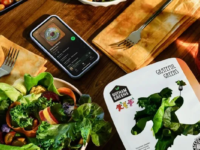 Supermarkets’ high standards for fresh produce is seeing up to 87 per cent of edible and undamaged tomatoes in Queensland passed over for retail sale, new research has found.
Supermarkets’ high standards for fresh produce is seeing up to 87 per cent of edible and undamaged tomatoes in Queensland passed over for retail sale, new research has found.
Analysis of two supply chains from tomato growing heartland Bundaberg conducted by University of the Sunshine Coast researchers has revealed that between 70 to 84 per cent of produced tomatoes are being left in fields, with only around 45 – 60 per cent of total harvestable crop reaching consumers.
“These finding shows that sometimes it’s not even worth picking the crop,” said USC supervisor professor of Horticulture Steven Underhill.
“While horticultural food loss is a well-publicised problem, Tara McKenzie’s research is one of the first to put some real numbers around the problem in Queensland.”
McKenzie measured the overall postharvest losses from the field to markets in Brisbane and Bundaberg to determine the impact of harvesting, sorting and handling practices, transport, storage and supermarket product specifications. She also interviewed industry specialists and people working at the food supply chains.
“At every link, from harvesting and sorting to the market floor, edible tomatoes that were slightly odd-shaped or marked, or too small or too large were rejected because they didn’t meet market standards for only premium, unblemished product,” McKenzie said.
“The ability of supermarkets to impose their own specifications and reject product by the pallet, based on a single blemish, gives them considerable power over primary suppliers and wholesalers.”
She said the highest losses occurred in the field and packing sheds, where mechanisation and automated grading and sorting allowed commercial farms to stringently adhere to private food policy and standards.
“The level of food waste is heartbreaking and what is worse is the acceptance of this waste in our commercial food supply chains, with farmers being powerless to change it,” McKenzie said.
The commercial grower involved in the research project stopped growing tomatoes shortly after it was completed. McKenzie said the results suggested future strategies to reduce food waste needed to be directed at the retail and consumer stages of the food supply chain that have a huge impact on the level of losses experienced by the primary producers.
“By showcasing only cosmetically-perfect product, supermarkets are reinforcing unrealistic consumer expectations of how fruits and vegetables should appear,” she said.
















